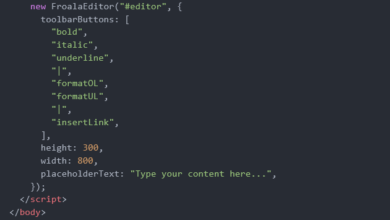What Is a Double-Sided Solar Panel?

Solar technology has evolved dramatically over the past decade, offering more efficient and cost-effective solutions for clean energy. Among the most exciting innovations are double-sided solar panels, also known as bifacial solar panels. Unlike traditional modules that capture sunlight only on one side, these panels generate electricity from both the front and the back, boosting overall performance.
As global demand for renewable energy grows, bifacial panels are quickly gaining traction in both residential and commercial projects. But what exactly are they, and how do they compare to traditional photovoltaic (PV) systems? Let’s explore their features, benefits, and applications.
Double-sided solar panels, also known as bifacial solar panels, offer increased efficiency by capturing sunlight on both sides. This innovative technology is gaining traction in various locations, including Antioch, CA, where solar energy is becoming increasingly popular. Companies like North Valley Solar Power are at the forefront of this movement, providing solutions that maximize energy output and sustainability. By utilizing the reflective surfaces around the panels, these systems can generate more electricity compared to traditional single-sided panels, making them an attractive option for both residential and commercial installations. As the demand for renewable energy grows, bifacial panels represent a significant advancement in solar technology.
How Double-Sided Solar Panels Work
Conventional solar panels consist of photovoltaic cells arranged on a single side, covered with protective glass. Bifacial panels, however, use transparent materials on both sides of the module, exposing solar cells to direct sunlight from above and reflected light from below.
This design means they can capture not just direct irradiation, but also albedo light, the sunlight reflected off surfaces such as white rooftops, sand, snow, or concrete. Depending on the installation environment, this can increase power output by 10% to 30% compared to standard panels.
Benefits of Double-Sided Panels
- Higher Energy Yield
By using both sides, bifacial panels maximize efficiency, especially in areas with high reflectivity. This makes them ideal for large-scale projects and regions with open landscapes. - Durability and Longevity
Many bifacial panels are frameless, using tempered glass on both sides. This design reduces the risk of micro-cracks and improves resistance to weather conditions, extending their lifespan. - Better Return on Investment (ROI)
While they often come with higher upfront costs, the increased energy generation offsets the expense over time. For businesses and utility-scale projects, this can significantly reduce the levelized cost of electricity (LCOE). - Versatility in Applications
They can be mounted on rooftops, integrated into façades, or used in ground-mounted solar farms. Elevated installations maximize reflected light capture, further enhancing efficiency.
Double-Sided Panels in a Solar Energy System
For homeowners or businesses, integrating bifacial technology into a solar energy system can mean more efficient energy use with fewer panels required to meet electricity demands. This not only saves space but also reduces balance-of-system costs like wiring, racking, and land use.
Moreover, bifacial panels pair well with modern energy storage solutions, ensuring surplus electricity can be saved for later use.
See also: Advancements in china oil purifier Technology
The Role in Utility-Scale Solar Farms
Large-scale solar farms are increasingly adopting bifacial technology to boost output. Countries like China, the U.S., and the UAE are already deploying gigawatt-scale projects using bifacial modules.
For Africa, the Middle East, and parts of Asia, regions with high solar irradiance and reflective ground conditions, double-sided panels present a cost-effective opportunity to accelerate renewable energy adoption.
Double-Sided Panels in an Off-Grid World
For communities seeking independence from unreliable grids, these panels can significantly improve resilience. A bifacial array integrated into a solar power system provides more reliable generation, even in challenging conditions. When combined with battery storage, off-grid households or businesses can enjoy uninterrupted electricity with reduced reliance on fossil fuels.
This makes bifacial technology particularly valuable for rural electrification, disaster-prone areas, and regions with growing energy demands.
Challenges to Consider
While promising, bifacial panels are not without challenges:
- Higher Initial Costs: Upfront expenses are higher than traditional modules, though they balance out over time.
- Installation Requirements: To achieve maximum efficiency, they need optimal mounting angles and reflective surfaces.
- Performance Variability: Energy gains depend heavily on site conditions; grassy fields, for example, provide less reflectivity than concrete or sand.
Despite these considerations, industry experts predict rapid cost declines as the technology matures, similar to the trajectory of conventional PV panels.
Future Outlook of Bifacial Technology
Market analysts project that bifacial panels will capture a significant share of the global solar market in the next decade. Their higher output, durability, and adaptability make them attractive for both developed and emerging economies.
As innovation continues, we may see improvements such as smarter coatings, AI-based tracking systems, and integrated storage solutions, all of which will make double-sided solar panels more efficient and affordable.
To Conclude
Double-sided solar panels represent the next step in solar innovation, providing increased efficiency, durability, and long-term value. While upfront costs remain a consideration, their ability to generate more electricity from the same surface area makes them a strong candidate for future-proof solar projects.
For homeowners, businesses, and communities, understanding how bifacial technology integrates into broader renewable strategies is key to making informed investment decisions. With growing adoption worldwide, these panels are set to play a major role in building a sustainable, energy-secure future.




